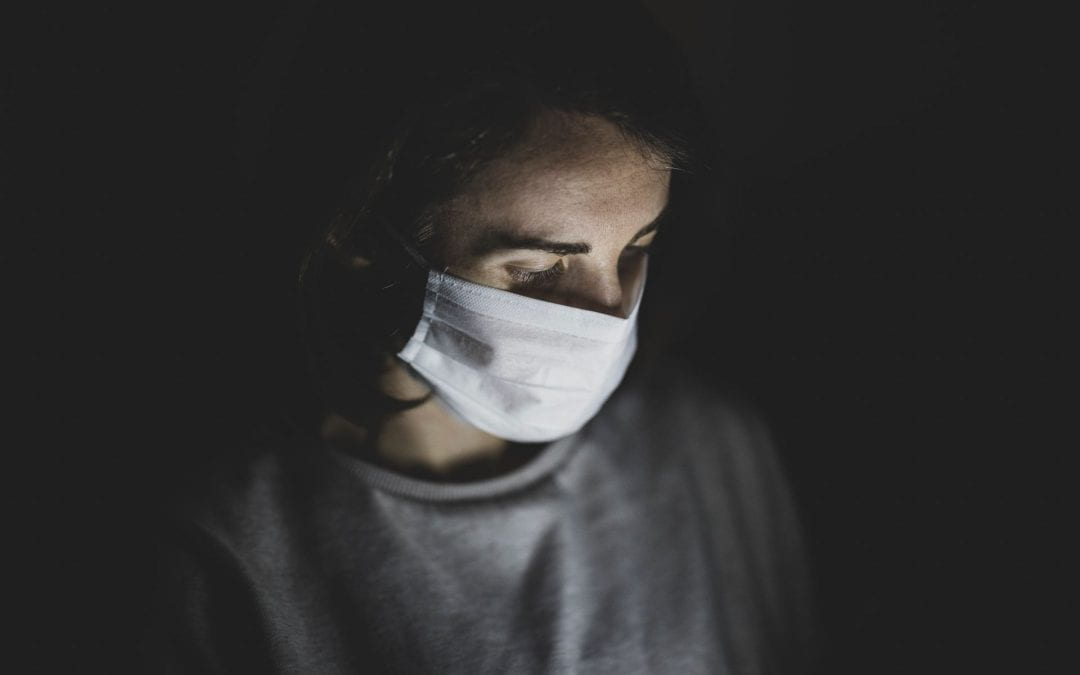By Helen Murray
New research shows that SARS-CoV-2 infection can cause significant damage to the olfactory bulb and brainstem and highlights the importance of monitoring the neurological symptoms of COVID-19.
Although COVID-19 is primarily a respiratory disease, many patients experience neurological symptoms. One of the prevalent and more unusual neurological symptoms has been the loss of the sense of smell. The sudden onset of this sensory deficit has neuroscientists worried.
The olfactory bulb is the brain region where odour information is processed and its proximity to the environment makes it particularly vulnerable. Odours that circulate in the air are detected by neurons in the roof of the nose and these neurons stretch across the bony cribriform plate directly into the olfactory bulb of the brain. This direct pathway between the outside environment and the olfactory bulb is a potential gateway for pollutants or viruses to gain access to the brain.
For this reason, scientists hypothesised that the loss of smell experienced by COVID-19 patients could be caused by the virus affecting the sensory neurons in the nose, or it might indicate a more sinister possibility that the virus has gained access to the olfactory bulb.
Recent evidence shows that the loss of smell is likely caused by an issue within the nose itself. A recent study from Harvard found that a key protein involved in SARS-CoV-2 infection called ACE2 is produced in non-neuronal cells in the nose (1). These cells provide structural support to the olfactory sensory neurons that detect odour. This ACE2 protein makes the support cells highly susceptible to SARS-CoV-2 infection which can cause inflammation in the nose and impair the function of the sensory neurons.
The virus may also access the brain via the sensory neurons and cause damage to the olfactory bulb. To investigate this, I worked with collaborators at the National Institutes of Health to examine brain tissue from COVID-19 patients. Our results were recently published as a correspondence in the New England Journal of Medicine. In collaboration with the University of Iowa College of Medicine and the Office of the Chief Medical Examiner in New York City, we obtained brain tissue samples from 19 patients who had passed away with COVID-19. The patients died at a wide range of ages (5 – 73 years old) within a few hours to two months after reporting COVID-19 symptoms and had additional risk factors such as diabetes, obesity or cardiovascular disease.
Our study used high-field magnetic resonance imaging (MRI) to examine the olfactory bulbs and brainstems of these patients after they had died. This scanner is 4-10x more sensitive than most MRI scanners and the images revealed spots called hypointensities that indicate bleeding.
We then looked at this same tissue under a microscope using fluorescent labelling and observed the blood vessels were thinner than normal and blood proteins had leaked out of the vessels into the surrounding brain tissue. These areas of leakage were surrounded by immune cells, indicating that an inflammatory response was occurring in the brain.
This type of damage is typically associated with stroke and neuroinflammatory diseases and suggests neurological symptoms are important to monitor in COVID-19 patients. This damage may contribute to the sudden olfactory deficit experienced by patients, but the mechanism is unclear. Interestingly, our study found no evidence of SARS-CoV-2 viral infection in the brain tissue samples, suggesting the damage we observe is most likely due to the brain mounting an immune response to the blood vessel leakage.
There is speculation that the damage caused by COVID-19 infection could cause long term neurological changes and an increased risk of developing Parkinson’s disease or other neurodegenerative disorders (https://www.newsroom.co.nz/ideasroom/the-link-between-covid-and-parkinsons). Many Parkinson’s patients lose their sense of smell long before the movement symptoms occur, suggesting the olfactory bulb could be one of the first brain regions affected in the disease. We hypothesise that environmental factors such as inflammation due to viral infection can cause toxic clumps of a protein called alpha-synuclein to build up in the olfactory bulb. These clumps can then propagate and spread to other areas of the brain and cause neuronal dysfunction.
Further investigation of the olfactory bulb damage we observed in COVID-19 patients may therefore help us understand how the virus can cause neurological symptoms and may also provide some clues about the triggers of neurodegenerative diseases. Our current work shows that SARS-CoV-2 infection can cause significant damage to the olfactory bulb and brainstem and highlights the importance of monitoring the neurological symptoms of COVID-19.
References:
Brann DH, Tsukahara T, Weinreb C, Lipovsek M, Van Den Berge K, Gong B, et al. Non-neuronal expression of SARS-CoV-2 entry genes in the olfactory system suggests mechanisms underlying COVID-19-associated anosmia. Sci Adv. 2020;6(31):1–20.
Helen Murray is a postdoctoral research fellow in the Faculty of Medical and Health Sciences at the University of Auckland. She is currently based in Professor Maurice Curtis’ lab at the Centre for Brain Research and concurrently holds a non-clinical collaborator appointment in Dr Alan Koretsky’s lab at the National Institutes of Health in Bethesda, USA. Her co-researchers are listed below.
Our Study: Lee MH, Perl DP, Nair G, Li W, Maric D, Murray H, Dodd SJ, Koretsky AP, Watts JA, Cheung V, Masliah E, Horkayne-Szakaly I, Jones R, Stram MN, Moncur J, Hefti M, Folkerth RD, Nath A. Microvascular Injury in the Brains of Patients with COVID-19. New England Journal of Medicine, December 30, 2020. DOI: 10.1056/NEJMc2033369.
For more information on COVID-19, head to the Ministry of Health website.
Disclaimer: The ideas expressed in this article reflect the author’s views and not necessarily the views of The Big Q.
You might also like:

